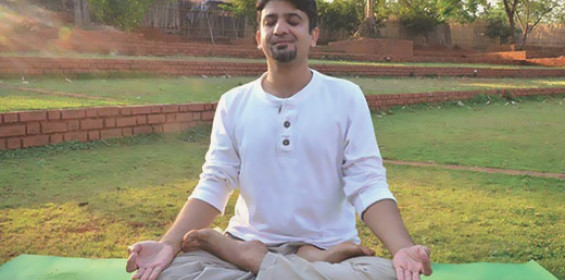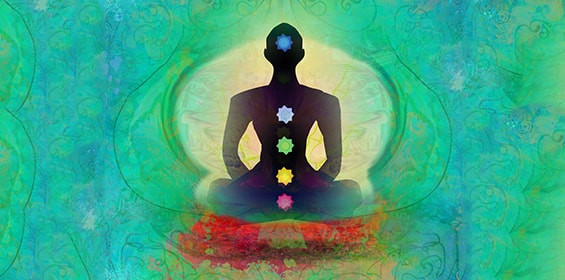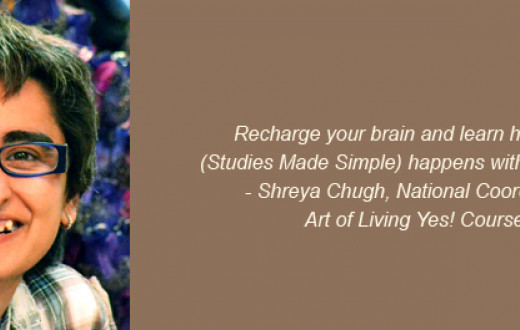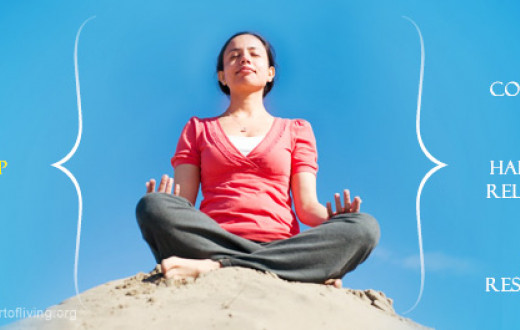By Sriram Sarvotham | Posted: March 13, 2019
While most of us appreciate the value and the need to quiet the mind in meditation, people frequently ask how this can be achieved. Perhaps some of us may wonder if this is even possible. Our mind seems to be gripped by an incessant flow of thoughts.
A turbulent mind drains precious energy from the system, leaving one feeling depleted and tired. As a result, the mind loses its sharpness and clarity. In fact, uncontrolled thoughts that bombard the mind are not of brilliant, Nobel-prize winning quality; they’re usually mundane and pedestrian!
As we move from turbulence to tranquility, the same energy that powered mind-chatter is now available to us; it can be utilized to create higher levels of alertness and clarity. From this powerful state of mind, highly creative ideas and solutions can be born.
When we quiet the mind
One of the primary reasons why it seems challenging to quiet the mind in meditation is because our awareness gets caught up in the torments of body and mind.
When we sit to quiet the mind, we become more keenly aware of the discomforts in the body. For example, we become more sensitive to the tension in the muscles, discomfort in the joints or even itching sensations on the skin. The situation is similar to taking a dilapidated car for a drive to enjoy the scenery; our attention is consumed by the torments of the car and we miss out on the scenery. In like manner, we miss out on the inner scenery of meditation when the vehicle called ‘body’ isn’t in harmony.
Even when the body feels fine, we find that the mind is clobbered with excessive thoughts. Or perhaps we find ourselves in the other extreme, where the mind becomes lethargic and dull and we fall asleep! Whether we’re experiencing excessive thoughts (rajas) or dull mind (tamas), we aren’t experiencing bliss in meditation.
Preparing your mind and body
While we can’t directly force or demand the mind to quiet itself, we can prepare the mind to allow stillness. These preparatory practices create the space for meditation to happen effortlessly. In this regard, meditation is similar to sleep: we cannot enforce it or drag it into our experience, we can only allow it to happen!
The practice of yoga postures (asanas) and breathing practices (pranayama and kriya) provide an excellent foundation to allow meditation.
Hatha Yoga Pradipika, an ancient, classical yoga text, mentions three benefits of practicing yoga postures: we gain stability (sthairyam in Sanskrit), lightness of the body (anga laghavam) and freedom from disease (arogyam). Each of the the three benefits directly paves the way for a wonderful meditation to unfold.
Stability ensures that the body has the strength to sit comfortably, in a steady seated posture, for the entire duration of meditation. Lightness of the body ensures that we are not caught up with the body; the body is so light that we forget the “vehicle” and allow our awareness to be in communion with the “inner scenery.” Lastly, a disease-free body removes any impediment towards experiencing harmony. In fact, Maharishi Patanjali mentions illness (vyadhi) as the first of the nine obstacles that prevent us from experiencing yoga.
Benefits of pranayama
While yoga postures help to prepare the body for meditation, yogic breathing practices (pranayama) help to prepare the mind. Maharishi Patanjali gives two powerful benefits of doing pranayama. First, it removes the layers of dullness (avaranas) that cover and obstruct the light of awareness (prakasha). By practicing pranayama, we ensure that we enter meditation with a bright and alert mind, devoid of dullness.
Secondly, Patanjali says pranayama develops the ability of the mind to be one pointed (dharana sucha yogyata manasaha). When the mind is scattered with incessant thoughts, the quality of meditation is poor. We can consolidate the mind in one harmonious unit, free of scattered awareness. Furthermore, the practice of pranayama empties the mind of unnecessary thoughts.
For example, breathing practices such as kapalabhati leads the mind to a tranquil space called kevala kumbhaka which is characterized by a spontaneous pause in the breath, indicating a calm and serene mind. Pranayama creates a beautiful blend of tranquility and elevated awareness, which is the perfect and conducive environment to allow meditation.
Therefore, the sequence of asanas, pranayama and meditation work in synergy to effectively release turbulence and allow tranquility. One could say this is a deadly combination… or more accurately, a lively combination… that creates a powerful experience of yogic bliss!
This article was originally published on Sriram’s Blog. To see part 1 of this series, click here.
Shriram Sarvotham, yoga teacher since 1991, holds a PhD degree in Electrical Engineering from Rice University, Houston, TX. He works in the tech industry in Silicon Valley California.














































